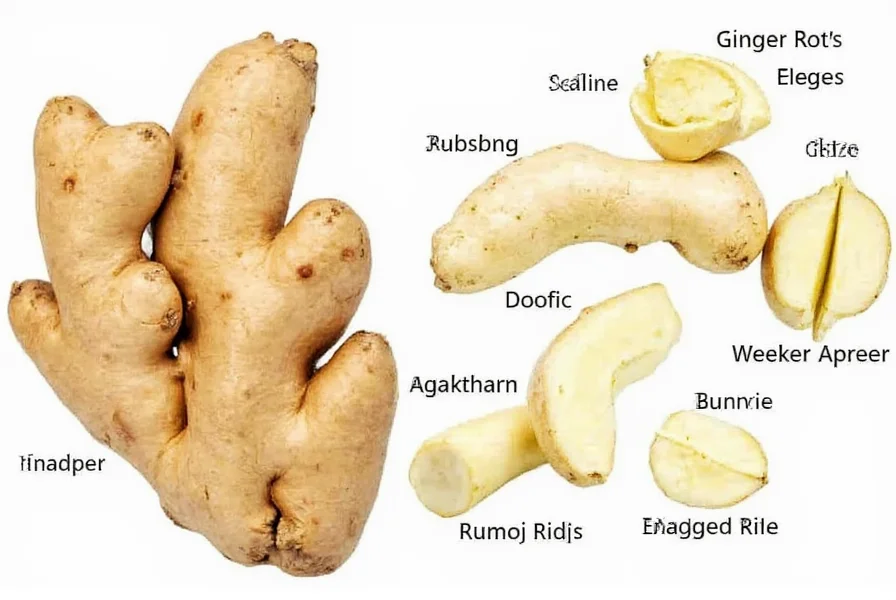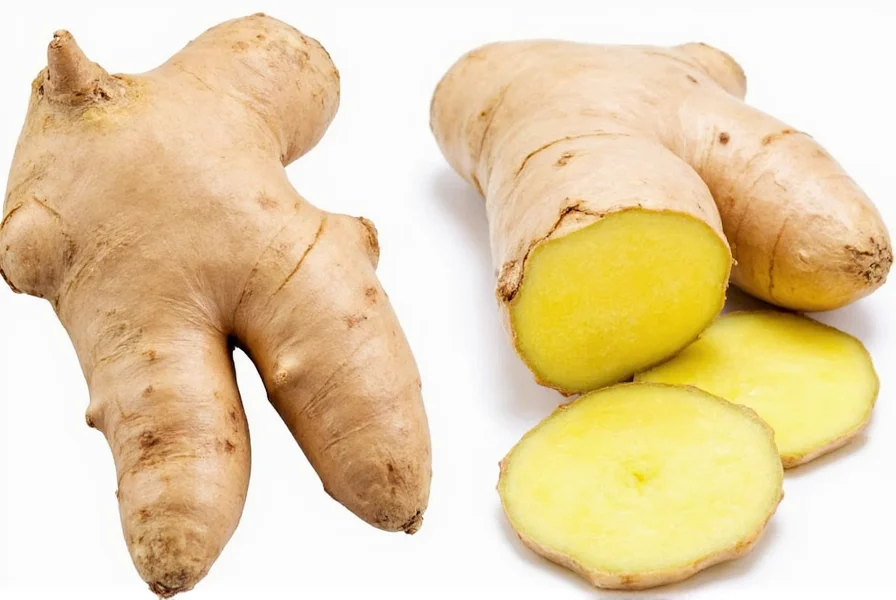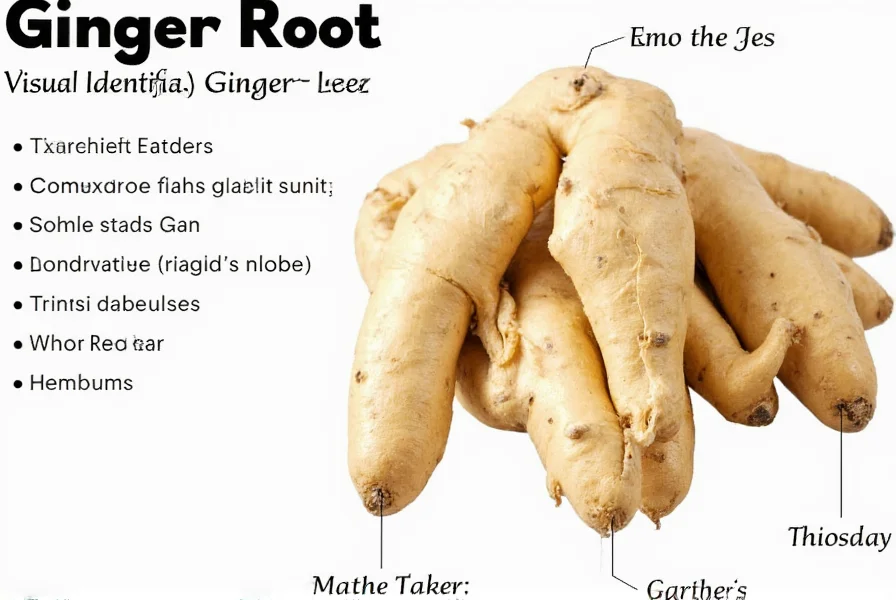Understanding Ginger: More Than Just a Spice
When searching for pictures of a ginger, most people seek visual references of the ginger root (Zingiber officinale), a rhizome widely used in global cuisines and traditional medicine. This comprehensive visual guide provides accurate representations of ginger in its various forms, helping you identify quality specimens and understand proper usage.
Authentic Ginger Root Visual Reference
Ginger root has distinctive characteristics that help with identification. Understanding these features ensures you select the best quality ginger for culinary or medicinal purposes.

Key Identification Features
| Feature | Description | Quality Indicator |
|---|---|---|
| Texture | Firm, smooth skin with visible 'eyes' or growth nodes | Firmness indicates freshness; soft spots suggest spoilage |
| Color | Light tan to medium brown exterior; pale yellow interior | Darker spots indicate age; vibrant yellow interior shows freshness |
| Moisture | Slightly moist but not wet or shriveled | Shriveling indicates dehydration and loss of flavor compounds |
| Aroma | Pungent, spicy-sweet fragrance when scratched | Strong aroma correlates with higher gingerol content |
Different Forms of Ginger: Visual Guide
Understanding varieties of ginger root pictures helps in selecting the right type for your needs. Ginger appears in multiple forms, each with distinct visual characteristics:
Fresh Ginger Root
The most versatile form, featuring a knobby appearance with thin, papery skin. When peeled, it reveals a pale yellow interior with visible fiber patterns. High-quality fresh ginger should feel heavy for its size and have taut skin without wrinkles.
Powdered Ginger
Made from dried and ground ginger root, this form has a fine, light yellow to golden powder consistency. Quality powdered ginger maintains a vibrant color and strong aroma. Look for pictures of ginger powder that show consistent texture without clumping.
Candied Ginger
Also called stem ginger, this form features ginger pieces preserved in sugar syrup. Authentic candied ginger pictures show translucent ginger pieces with a glossy coating. The interior should maintain some fibrous texture rather than being completely smooth.
Preserved Ginger
Often found in syrup or vinegar, preserved ginger maintains its shape while becoming tender. Quality preserved ginger retains a vibrant yellow color rather than turning brown or gray.

Practical Uses of Ginger Root
Knowing how to identify quality ginger through visual identification of ginger root directly impacts its culinary and medicinal effectiveness. The active compounds, particularly gingerols, degrade over time, making fresh, high-quality ginger essential for maximum benefits.
Culinary Applications
Chefs recommend using fresh ginger for dishes where its bright, spicy flavor is central. The fibrous nature visible in quality ginger pictures indicates higher gingerol content, which provides the characteristic zing. Finely grated ginger releases more flavor compounds than sliced forms.
Medicinal Benefits
Traditional medicine systems worldwide utilize ginger for digestive support and inflammation reduction. Research shows that the visual quality indicators (firmness, color, aroma) correlate with higher concentrations of bioactive compounds. Properly stored ginger maintains potency for up to three weeks in the refrigerator.
Storage Techniques for Maximum Freshness
Proper storage extends ginger's shelf life and preserves its visual appeal and potency. Understanding how quality ginger should look helps identify when it's past its prime.
- Refrigeration: Store unpeeled ginger in an airtight container or wrapped in paper towels inside a plastic bag. Check weekly for moisture buildup.
- Freezing: Whole or sliced ginger freezes well and can be grated directly from frozen. Frozen ginger develops a slightly different texture but maintains flavor.
- Drying: For long-term storage, slice ginger thinly and dehydrate at low temperatures to preserve maximum nutrients.
Cultural Context: The Term 'Ginger' for Red Hair
While searching for pictures of ginger, some users may be looking for references to red-haired individuals, particularly in British English where 'ginger' colloquially describes people with red hair. This usage varies significantly by region and cultural context.
Unlike the botanical subject, visual references for this meaning aren't appropriate in an educational context due to privacy considerations and potential for stereotyping. When discussing human characteristics, respectful language that focuses on individual identity rather than physical traits is recommended.
Conclusion: Finding Authentic Ginger Visuals
When searching for high-quality pictures of ginger root, look for images that clearly show the texture, color variations, and structural features described in this guide. Authentic visual references help with proper identification, selection, and usage of this versatile botanical. Understanding these visual characteristics ensures you get the most flavor and health benefits from your ginger purchases.
Frequently Asked Questions
What does fresh ginger root look like?
Fresh ginger root has a knobby, irregular shape with light tan to medium brown skin. When peeled, it reveals a pale yellow interior with visible fiber patterns. High-quality ginger feels firm and heavy for its size, with taut skin and a pungent, spicy-sweet aroma when scratched.
How can I tell if ginger has gone bad?
Ginger has spoiled when it develops soft spots, dark mold, or a slimy texture. The skin may become excessively wrinkled or shriveled, and the interior turns grayish or brown instead of vibrant yellow. Spoiled ginger loses its characteristic aroma and may develop a sour smell.
What's the difference between young and mature ginger?
Young ginger has thinner skin that's often pale yellow with pinkish tints, requiring less peeling. It's more tender with a milder flavor and higher moisture content. Mature ginger has thicker, tougher brown skin, more pronounced fibers, and a stronger, spicier flavor profile with higher gingerol concentration.
Can I use pictures of ginger to identify different varieties?
Yes, visual identification helps distinguish ginger varieties. Common types include Chinese ginger (pale yellow, smooth skin), Indian ginger (darker, more fibrous), and African ginger (smaller, more pungent). Quality pictures show skin texture, color variations, and shape differences that indicate variety and origin.
Where can I find high-quality reference images of ginger?
Reputable botanical databases, agricultural extension websites, and culinary education resources provide accurate ginger reference images. Look for sources that show multiple angles, cross-sections, and comparative images of fresh versus spoiled specimens for the most helpful visual references.











 浙公网安备
33010002000092号
浙公网安备
33010002000092号 浙B2-20120091-4
浙B2-20120091-4